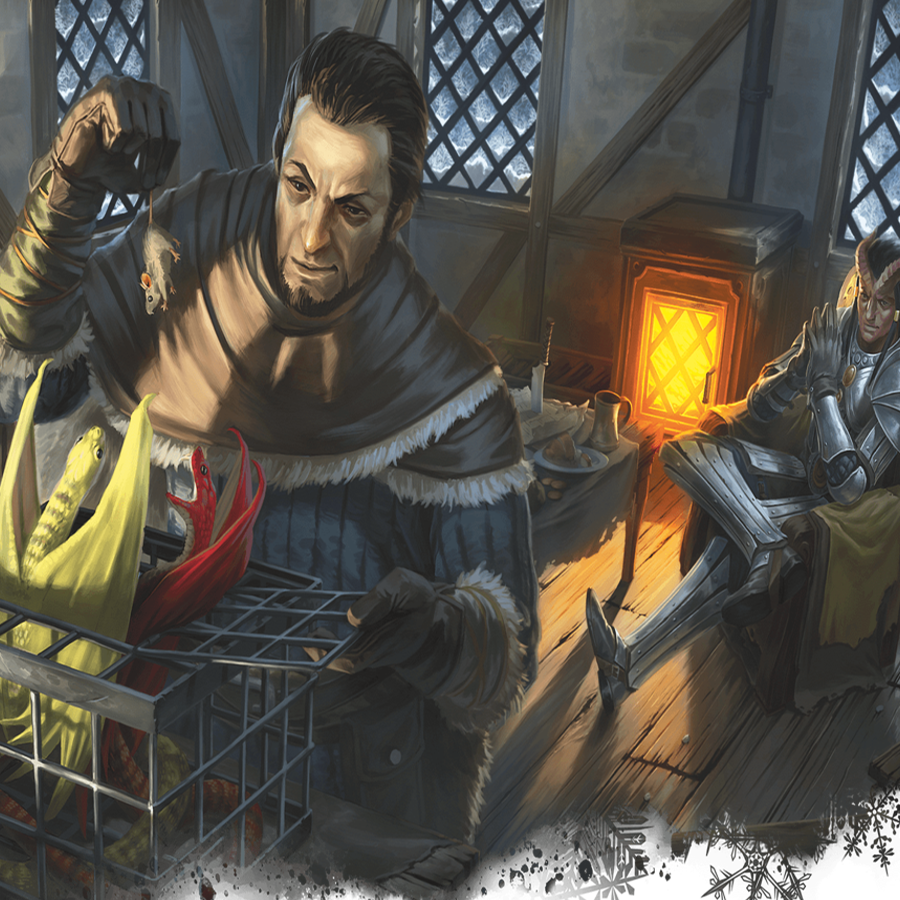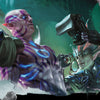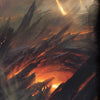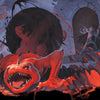9 Things All Good D&D Villains Have in Common

Written by Luke Hart
Villains are the lifeblood of a good D&D, Pathfinder, Shadowrun, or Call of Cthulhu game. If you have a good villain, you probably have a good game; if you have a bad one, you will probably have a bad game. So, today, we’ll cover 9 things that all good D&D villains should have.
Watch or listen to this article by clicking the video below.
#1 A good villain is compelling.
Almost all points that follow support this first point, but here are a couple quick things that contribute to compelling villains:
The villain and their minions are entertaining and/or memorable. How you make them entertaining or memorable is up to you. It might be how you roleplay them at the game table or how they have a really cool stat block, and that fight with them is amazing. They might do some dastardly deed that burns them into your players’ memories. The details are up to you, the game master, but the details should be entertaining or memorable.
A good villain is a villain that the characters want to stop. Maybe it’s personal, or maybe their plot is just so awful that the characters are driven to bring it to an end.
#2 Good villains have foreshadowing and mystery.
While running my Sword Coast Guard campaign, I constantly foreshadowed a future confrontation with the mysterious Lord Paxton. Player characters were running into his villains, lieutenants, and minions; they kept hearing about Lord Paxton and were fighting the powerful people who worked for him. So, foreshadowing was leading them up to him. Also, Lord Paxton was a mystery. My players didn’t know who or what he was until practically the very end of the campaign. You see, foreshadowing increases drama.
When the players know something is coming, something horrible and hideous or powerful, or something is unknown, and they’re not sure what it is, it builds anticipation. You want that suspense and drama in your game. If the players know everything about a villain or what the villain can do, it takes a lot of the fun out of the game. There is amazing fun in the unknown because, again—suspense, drama, and anticipation.
Let’s think about it for a second. Why do people hate movie spoilers or sports games spoilers? It’s because spoilers ruin the experience. It tells you in a few brief moments what happened or who won the game, and then all of the fun and entertaining parts of not knowing what will happen are stolen from you. Then, it’s like, what’s the point of watching the movie now or even watching the game? I already know how it turns out.
A good villain may also have a hidden identity that surprises the characters—perhaps someone they’ve considered a joke before, or they’ve met in an earlier adventure or even someone they consider an ally. A good villain always has some ability or knowledge that surprises the characters, but a great villain should never be completely predictable. Even if my players had managed to find out some stuff about Lord Paxton, they wouldn’t know everything about him. When they go into that final fight, he will be doing things they didn’t anticipate and couldn’t have known about.
#3 Good villains have a motivation and a goal.
Lord Paxton wanted to establish New Osoria, the giant kingdom come again. To that end, he gathered vassals and forcibly conquered those who would not submit. He didn’t just want to pillage and destroy—he was trying to build a new kingdom!
His motivation for doing that was that he was a demi-god of storm giants, and it rankled him that Osoria had fallen during the conflict with the dragons eons ago. For pride and glory, he wanted to bring it back. Giants are superior to all other races, so not having a kingdom that reflects that is wrong and immoral.
Villains should have something they are trying to accomplish and motivates them to do it. This drives the story and the narrative and also gives verisimilitude to your world. Bad guys usually aren’t just bad for kicks; they have reasons!
To the end of accomplishing their goal, a good villain has a good plan, or at least an interesting one. So, flesh out what that plan is and design how that plan will be implemented throughout your game.
#4 Good villains are heroes themselves.
Lord Paxton did not see himself as the villain. No, he was doing the virtuous thing by establishing New Ostoria and ushering in a new reign of peace in the region—once those who opposed him had submitted, of course.
A good villain is the hero of their own story. They never think of themselves as the villain. Something that makes evil so attractive is that it can easily be twisted to appear “good.”
A good villain has layers. They’re not one note but have multiple dimensions that make them more realistic. For instance, Lord Paxton ruthlessly crushed and subjugated those who opposed him, but those who joined him had generous benefits and prosperity.
#5 Good villains are good leaders.
A good villain is a good leader whether by charisma, intelligence, or fear. Why? Almost all good villains have cronies; to get cronies, you need to be a good leader. It is rare to find a good villain who has no helpers or minions.
Lord Paxton had tons of cronies working for him—creatures that had sworn to him as vassals. He even had an ancient white dragon working for him! This worked to create mystery—How does a dragon work for him?—and suspense—eventually, we’ll need to fight that dragon, right? In fact, I introduced that white dragon to my players around level five when they had no chance of beating him. But they knew going forward that the dragon worked for Lord Paxton, and they would probably have to do something about that.
Lieutenants and mooks working for the villain show the villain’s power and influence. They also give the characters a place to start in the campaign. They would have to clean up the lower tiers as they level up and work toward taking on the Big Bad of the entire campaign.
As the characters are doing this, it allows the GM to reveal lore and other tidbits about what’s going on, such as the villain’s ambitions, the lore, tidbits of information about the Big Bad, and so on. It adds more suspense, drama, and anticipation!
#6 Good villains challenge characters and players.
First, a villain should be powerful and represent a threat. Lord Paxton was no joke, and the final fight with him was challenging. Villains that are pushovers and are defeated easily are anti-climactic.
A few years ago, in my “Hand of Light” group, the players were taking on githyanki. When they got to the final fight with a githyanki knight, they killed him in one round due to Divine Smite. Ben, the player whose Paladin had Divine Smite it twice, maybe got a crit on one of them and killed that villain in just one round, said, “That’s it?” You see, it was disappointing for him even though he personally dispatched the villain in one round. It was disappointing because it was so easy; there was no effort or challenge.
When there is no challenge, a victory feels empty. It’s like earning a participation trophy, which just sucks and is honestly just insulting. Even if your villain is weak for whatever reason, they should have leadership qualities or something that allows their cronies and minions to be powerful. Any way you slice it, the villain should be a challenge, whether it’s physical or intellectual, a challenge via puppets they control, or whatever.
Furthermore, a good villain doesn’t just threaten the heroes but something the heroes care about, be it the village, the world, or even just an NPC they’ve come to love. A double or triple threat is always better than a villain that just exists to threaten the characters, though they certainly should threaten them.
However, a good villain has a weakness the characters can learn about and exploit. More than just being powerful or challenging in that respect, a good villain makes the players think. They challenge the players’ expectations or beliefs. They may even make the players wonder if the villain actually has a good reason for their actions. The best villains aren’t entirely wrong. They’re the bad guys and should ultimately be the bad guys, but some aspect of their plan should make sense. Some of the best villains are even redeemed in the end, but this should be used sparingly. Most villains should need to be defeated.
#7 Good villains introduce conflict.
Lord Paxton’s vassals threatened any city or community that wouldn’t join him, creating war and conflict in the region. After all, what is D&D without conflict? What are the players even going to do? Start an inn? Become a blacksmith? It is the GM’s job to create conflict in the game that intersects with the characters, and villains are the medium through which game masters do this.
Any movie worth a dang has conflict. It may not be physical combat, but there is always some sort of conflict. It is the same in plays and books. Any story that anyone has ever cared about has conflict of some sort. Your D&D game must be the same.
#8 Good villains are active.
A good villain would be doing whatever they’re doing even if the player characters didn’t exist. Unless a villain is specifically tied to a character’s background or previous events in the campaign, the villain should be doing bad things even before the heroes get involved.
A good villain shouldn’t just sit in their lair, waiting to be stopped. They should actively work to fulfill their plans and stop those interfering with them.
For instance, when the players’ characters started interfering with Lord Paxton’s plans, he sent hit squads against them. He also did other things in response to the PCs’ actions. He did not just sit there statically, waiting for the characters to defeat him or come to him.
#9 Good villains are intelligent or cunning.
If you want to create a compelling campaign, adventure, and narrative that maintains verisimilitude and doesn’t get plot holes punched in it by your players, it usually works best to have either intelligent or cunning villains—at least for the Big Bad. Lieutenants and mooks might be dumb lugs, but the big guy calling the shots should have the IQ or the wisdom to justify the narrative the campaign is weaving.
A Template for Designing Your Villains!
If you're looking for a template that walks you through the process of fleshing out a villain for your games, that is one of the many GM resources included in the Secret Art of Game Mastery Collection.
This three-book collection includes the following GM resources usable for any game system in any genre:
-
The Secret Art of Game Mastery. Contains over 100 years of GM advice distilled into an easy-to-read format. It introduces and explains the tools of the trade, scheduling, playstyle, post-game notes, getting player feedback, and more.
-
The Secret Art of Preparation. Brings to your fingertips the actual templates and guides that the DM Lair team uses to prepare games, Lair Magazine, and more. Designed as a three-ring binder, it's intended for you to write directly into for your entire campaign!
- The Secret Art of Notetaking. Gives you the keys to tracking your campaign from session to session just like the DM Lair team. Designed as a three-ring binder, it's intended for you to write in and keep track of your whole campaign!
Get 100 years of accumulated experience, distilled into easy-to-use reference guides with the Secret Art of Game Mastery Collection.
-
Posted in
Game Master How-To Articles







